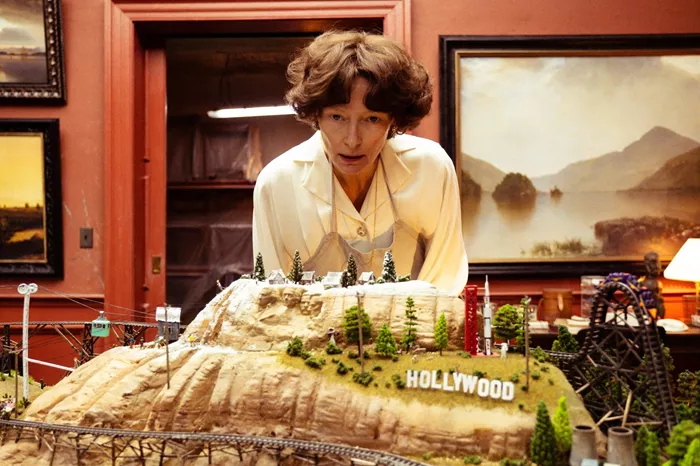Six months after its premiere at the Telluride Film Festival, Joshua Oppenheimer’s daring musical The End seems ripe for a critical reappraisal. While initial reviews were met with polite confusion, the film, Oppenheimer’s first dramatic feature since The Act of Killing, demands a second look.
From the director of a groundbreaking documentary about the Indonesian genocides, The Act of Killing, The End offers a similarly audacious approach, this time blending experimental theater with an urgent commentary on climate change and political collapse. Despite the film’s ambitious premise, many critics initially struggled with its unconventional narrative and structure.
The film is set entirely within an isolated underground bunker and unfolds over a sprawling two-and-a-half-hour runtime. The end of the world, a climate disaster years in the making, has already happened before the audience is introduced to the bunker’s inhabitants. The narrative sidesteps typical apocalyptic conventions, omitting any dramatic scenes of destruction in favor of examining a group of survivors trapped in a state of denial.
As if to emphasize the bleakness of the situation, Oppenheimer denies his characters individual names, presenting them only through their roles—an artistic choice that recalls the political theater of the 1970s. Michael Shannon plays the authoritative Father, Tilda Swinton is the distant and detached Mother, George MacKay portrays the naive Son, and Bronagh Gallagher takes on the role of the mournful Friend. Tim McInnerny, in a standout performance, plays the Butler, whose role is defined by servitude rather than personality.
Oppenheimer’s vision of a post-apocalyptic world is chillingly meticulous. The bunker is self-sustaining, with a fish farm that provides fertilizer for plants, while fine art adorns the walls—specifically works inspired by the heroic landscapes of German painter Caspar David Friedrich. Father, who amassed his wealth through oil, seems to model himself after the solitary figure in Wanderer above the Sea of Fog, disconnected from the chaos outside. Yet, the reality is one of cowardice and stagnation, as the family and their retainers lead a hollow existence in a dying world.
The Son’s obsession with writing an absurd, hagiographic biography of his father, despite there being no one to read it, serves as a metaphor for the family’s delusional sense of purpose. Seasons pass in monotonous rituals that reinforce their inability to face the truth. This fragile bubble of self-delusion is disrupted when they take in a refugee, played by Moses Ingram, who is simply credited as “Girl.” Her arrival forces the family to confront their isolation, though only briefly.
At its core, The End is a grim operetta, exploring the denial that pervades both its characters and the world at large. The film’s musical elements, with lyrics by Oppenheimer and melodies by Joshua Schmidt, serve as a means for the characters to express what their spoken words cannot. In their interactions, they sing about a world that no longer exists, echoing the collective lie that “everything is fine.” This refrain speaks not only to the characters’ internal denial but also to a larger societal refusal to confront the environmental and political crises threatening humanity.
Filmed largely at Ardmore Studios in County Wicklow, The End combines aesthetic beauty with a chilling message, delivered with elegance and understated sophistication. However, the film’s deliberate pacing can be a challenge for some viewers, particularly in its first hour, where the sense of entrapment both within the bunker and the cinema can feel overwhelming. Yet, for those willing to engage with its slow burn, The End offers a profound and unsettling meditation on our refusal to face the consequences of our actions.
In its reflection of our current state of denial, Oppenheimer’s musical has the potential to become a cult classic, offering a melodic and haunting warning from beneath the earth. If any recent film has the ability to resonate in the years to come, it is this eerie, thought-provoking exploration of human complacency in the face of apocalypse.
Related topic:
“Rose-Lynn” A Fiery Journey of Dreams and Resilience
Nolan’s “The Odyssey” Feels Like an Indie Film, Says Leguizamo
“Magazine Dreams” Opens to $700K Amid Indie Film Struggles

